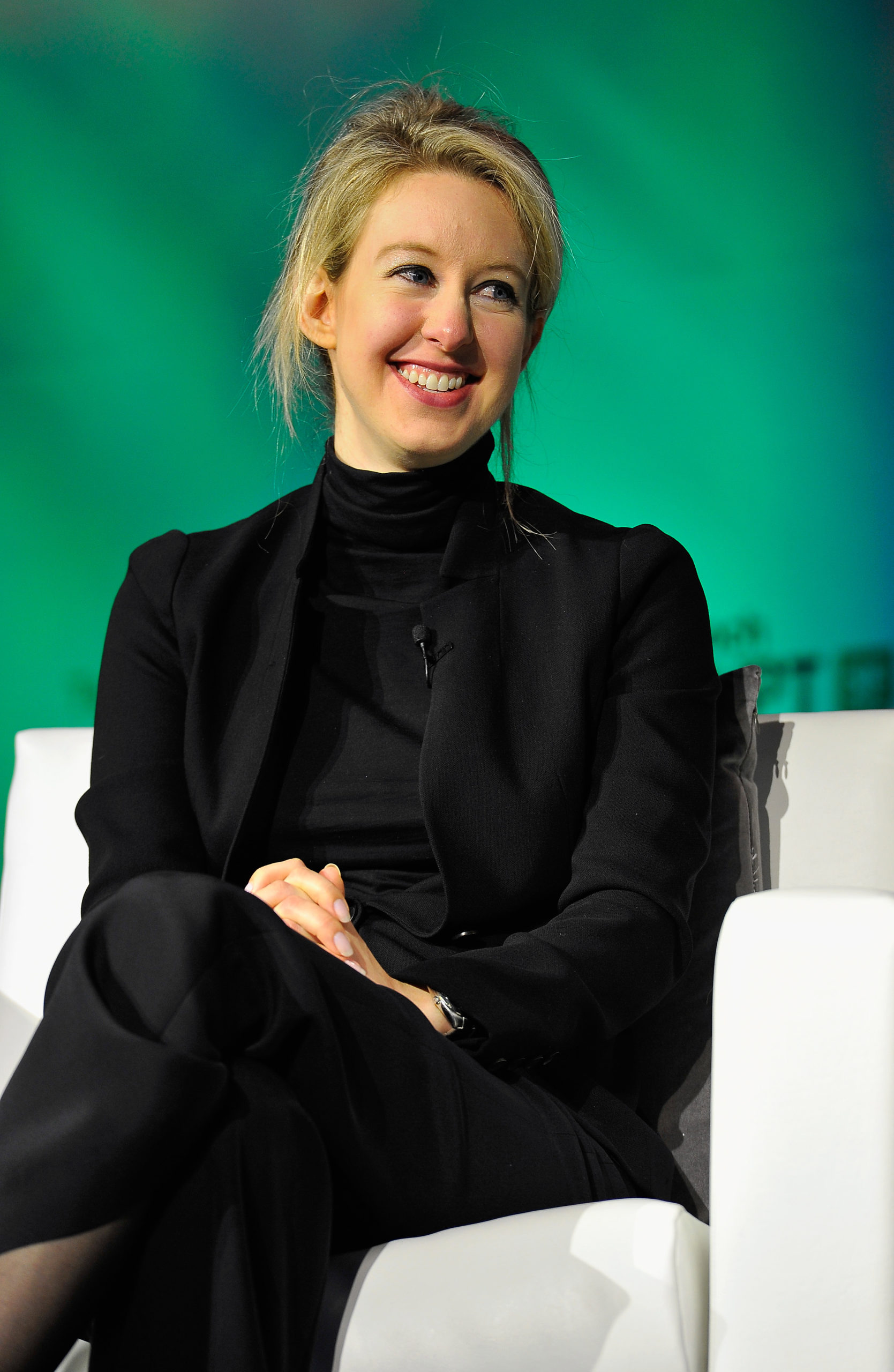Who is Elizabeth Holmes?
Elizabeth Holmes is the founder and former CEO of the now defunct healthcare technology company, Theranos. Holmes was a student at Stanford beginning in 2002 and studied chemical engineering. She dropped out of Stanford during her sophomore year to focus her attention on developing Theranos.
What was the goal of Theranos?
Theranos’ goal was to perform various diagnostic tests off a single drop of blood from an individual’s fingertip. Holmes had a vision of “democratizing healthcare” with Theranos technology and wanted the Theranos machines — dubbed “Edison” after Thomas Edison — to be available in Theranos wellness centers across the United States. Holmes, who often spoke of her fear of needles, envisioned people walking into stores like Walgreens and being screened for hundreds of diseases efficiently and painlessly with the Edison.
Holmes’ promise of revolutionizing the healthcare industry won over many prominent investors, companies and the media. Theranos raised over $700 million from investors, and was valued at $9 billion in 2014. As Theranos rose to prominence, the company secured partnerships with healthcare companies including Capital Blue Cross and Cleveland Clinic. Theranos also partnered with Walgreens and in 2013, the company opened 40 Theranos wellness centers in Walgreens stores across Arizona.
Why did Theranos collapse?
In 2015, the Wall Street Journal published an article by John Carreyrou exposing Theranos for not using its own technology to run tests on the blood samples they collected from individuals. Instead of using the Edison machines, Carreyrou discovered that Theranos was using traditional testing machines and not telling its customers or investors.
Two Theranos employees had also noticed that the company wasn’t being truthful about the functionality of its equipment. Erika Cheung and Tyler Shultz ’13, the grandson of George Shultz, both worked at Theranos in 2013-14 and sounded alarms about the company’s practices. They described a secretive work culture at Theranos, where non-functioning tests were discarded and employees were discouraged from raising their concerns about the technology. Those who did feared losing their jobs.
In 2015, the FDA began an investigation into Theranos and in July 2016, Holmes was banned from the lab-testing industry for two years. In October 2016, Theranos shut down its wellness centers. Investors in the company lost an estimated $600 million.
What are the charges for which Holmes is standing trial? How long will the trial last?
Holmes was charged by the SEC and had to step down as CEO of Theranos in 2018. The current indictment by federal prosecutors alleges that Holmes engaged in a multi-million-dollar scheme to defraud investors, doctors and patients. She was charged with 10 counts of wire fraud and two counts of conspiracy to commit wire fraud. Holmes has pleaded not guilty. If convicted, she could face up to 20 years in prison and $2.7 million in fines.
Holmes’ close collaborator at Theranos, former Theranos President and COO Ramesh “Sunny” Balwani has also been charged with fraud and conspiracy, although his trial is separate from that of Holmes. Holmes and Balwani were in a relationship when they worked at Theranos together, although many investors and employees did not know the two were a couple until after Theranos collapsed.
Jury selection began in San Jose on Aug. 31. The trial is expected to last three to four months.
Who at Stanford helped Holmes launch Theranos? Did Holmes have any detractors?
Holmes’s vision for Theranos developed early in her time at Stanford. She initially consulted with Stanford professor of medicine Phyllis Gardner, who raised concerns about Holmes’ ability to create the Theranos technology. Holmes then persuaded her advisor and then Dean of Stanford’s School of Engineering Channing Robertson to back her idea. Robertson supported Holmes, and went on to become a board member at Theranos.
Other prominent members of the Stanford community were also inspired by Holmes. Former US Secretary of State and Thomas W. and Susan B. Ford Distinguished Fellow at the Hoover Institution George Schultz invested in Theranos and served on the company’s board. The high-profile nature of Holmes’ initial investors helped her establish relationships with additional investors. Former US Secretary of State and National Security Advisor Henry Kissinger and former Secretary of Education Betsy DeVos were among other investors.
In 2015, Stanford professor of medicine John Ioannidis publicly criticized Theranos, writing in the Journal of the American Medical Association that Theranos was being untruthful about the accuracy of its technology, and instead prioritizing “products, services and profit.”
How did Holmes make a name for herself?
Holmes was a successful young woman in a Silicon Valley start-up culture traditionally dominated by men. She gained notoriety for dressing similarly to Steve Jobs, wearing all black and turtlenecks. In 2015, Holmes had a net worth of $4.5 billion, making her the youngest self-made female billionaire. She gave a TED Talk, was on the cover of Fortune magazine and Forbes, and spoke on a panel with Alibaba’s Jack Ma and former president Bill Clinton.
I’m hooked. What can I read or watch to gain a more in depth perspective?
- The Dropout podcast by ABC
- HBO movie The Inventor: Out for Blood in Silicon Valley
- Bad Blood: Secrets and Lies in a Silicon Valley Startup by John Carreyrou
This article has been updated to include information about Stanford professor John Ioannidis, who also raised concerns about Theranos’ technology.
